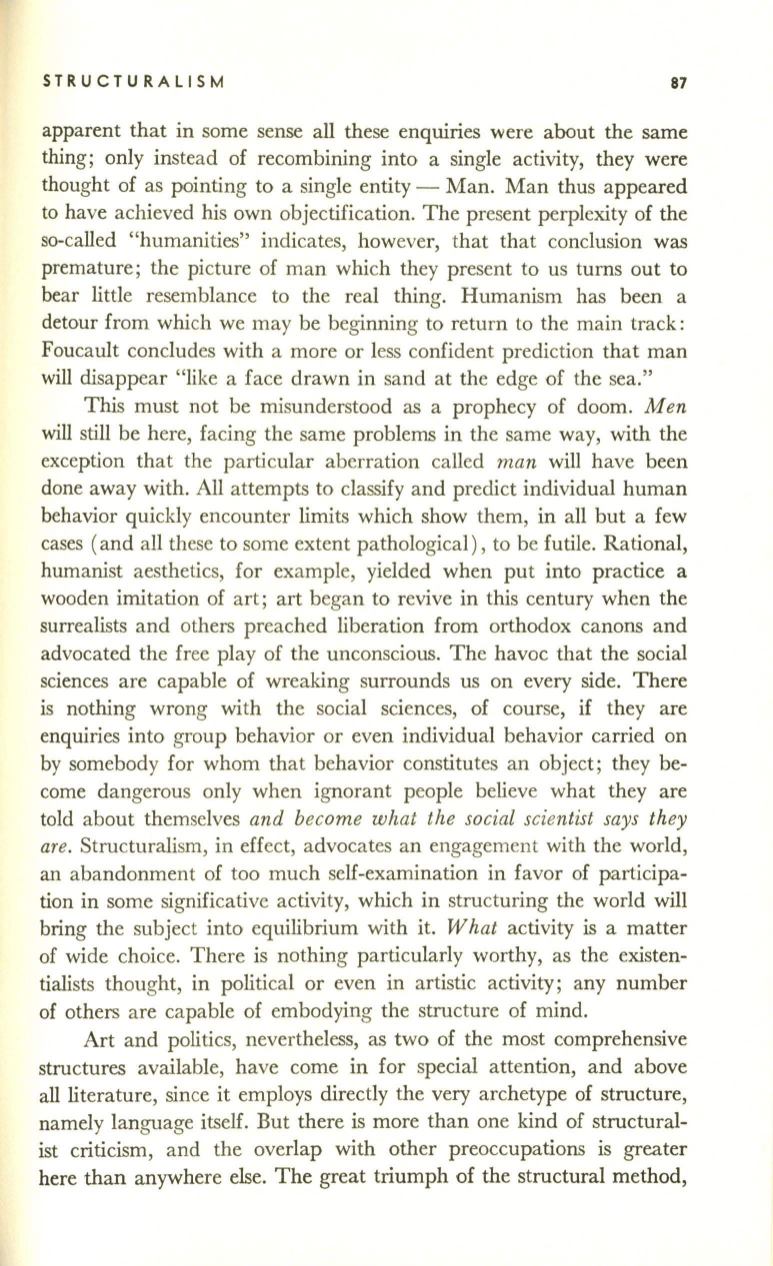
STRUCTURALISM
87
apparent that in some sense all these enquiries were about the same
thing; only instead of recombining into a single activity, they were
thought of as pointing to a single entity - Man. Man thus appeared
to have achieved his own objectification. The present perplexity of the
so-called "humanities" indicates, however, that that conclusion was
premature; the picture of man which they present to us turns out to
bear little resemblance to the real thing. Humanism has been a
detour from which we may be beginning to return to the main track:
Foucault concludes with a more or less confident prediction that man
will disappear "like a face drawn in sand at the edge of the sea."
This must not be misunderstood as a prophecy of doom.
Men
will still be here, facing the same problems in the same way, with the
exception that the particular aberration called
man
will have been
done away with. All attempts to classify and predict individual human
behavior quickly encounter limits which show them, in all but a few
cases (and all these to some extent pathological) , to be futile. Rational,
humanist aesthetics, for example, yielded when put into practice a
wooden imitation of art; art began to revive in this century when the
surrealists and others preached liberation from orthodox canons and
advocated the free play of the unconscious. The havoc that the social
sciences are capable of wreaking surrounds us on every side. There
is nothing wrong with the social sciences, of course, if they are
enquiries into group behavior or even individual behavior carried on
by somebody for whom that behavior constitutes an object; they be–
come dangerous only when ignorant people believe what they are
told about themselves
and become what the social scientist says they
are.
Structuralism, in effect, advocates an engagement with the world,
an abandonment of too much self-examination in favor of participa–
tion in some significative activity, which in structuring the world will
bring the subject into equilibrium with it.
What
activity is a matter
of wide choice. There is nothing particularly worthy, as the existen–
tialists thought, in political or even in artistic activity; any number
of others are capable of embodying the structure of mind.
Art and politics, nevertheless, as two of the most comprehensive
structures available, have come in for special attention, and above
all literature, since it employs directly the very archetype of structure,
namely language itself. But there
is
more than one kind of structural–
ist criticism, and the overlap with other preoccupations is greater
here than anywhere else. The great triumph of the structural method,


